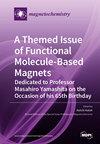Design and Numerical Study of Magnetic Energy Storage in Toroidal Superconducting Magnets Made of YBCO and BSCCO
IF 2.5
4区 化学
Q2 CHEMISTRY, INORGANIC & NUCLEAR
引用次数: 0
Abstract
The superconducting magnet energy storage (SMES) has become an increasingly popular device with the development of renewable energy sources. The power fluctuations they produce in energy systems must be compensated with the help of storage devices. A toroidal SMES magnet with large capacity is a tendency for storage energy because it has great energy density and low stray field. A key component in the creation of these superconducting magnets is the material from which they are made. The present work describes a comparative numerical analysis with finite element method, of energy storage in a toroidal modular superconducting coil using two types of superconducting material with different properties bismuth strontium calcium copper oxide (BSCCO) and yttrium barium copper oxide (YBCO). Regarding the design of the modular torus, it was obtained that for a 1.25 times increase of the critical current for the BSCCO superconducting material compared with YBCO, the dimensions of the BSCCO torus were reduced by 7% considering the same stored energy. Also, following a numerical parametric analysis, it resulted that, in order to maximize the amount of energy stored, the thickness of the torus modules must be as small as possible, without exceeding the critical current. Another numerical analysis showed that the energy stored is maximum when the major radius of the torus is minimum, i.e., for a torus as compact as possible.YBCO和BSCCO环形超导磁体磁能存储的设计与数值研究
随着可再生能源的发展,超导磁体储能已成为一种越来越受欢迎的储能装置。它们在能源系统中产生的能量波动必须借助存储设备加以补偿。大容量环形中小微磁体具有能量密度大、杂散场小的特点,是储能的发展趋势。制造这些超导磁体的一个关键因素是制造它们的材料。本文用有限元法对两种不同性质的超导材料铋锶钙氧化铜(BSCCO)和钇钡氧化铜(YBCO)在环形模态超导线圈中的储能进行了数值比较分析。模块化环面设计结果表明,在相同储能条件下,BSCCO超导材料的临界电流比YBCO提高1.25倍,而BSCCO环面尺寸减小了7%。此外,经过数值参数分析,结果表明,为了最大限度地存储能量,环面模块的厚度必须尽可能小,不超过临界电流。另一数值分析表明,当环面主半径最小时,即环面越紧凑,所储存的能量越大。
本文章由计算机程序翻译,如有差异,请以英文原文为准。
求助全文
约1分钟内获得全文
求助全文
来源期刊

Magnetochemistry
Chemistry-Chemistry (miscellaneous)
CiteScore
3.90
自引率
11.10%
发文量
145
审稿时长
11 weeks
期刊介绍:
Magnetochemistry (ISSN 2312-7481) is a unique international, scientific open access journal on molecular magnetism, the relationship between chemical structure and magnetism and magnetic materials. Magnetochemistry publishes research articles, short communications and reviews. Our aim is to encourage scientists to publish their experimental and theoretical results in as much detail as possible. Therefore, there is no restriction on the length of the papers. The full experimental details must be provided so that the results can be reproduced.
 求助内容:
求助内容: 应助结果提醒方式:
应助结果提醒方式:


